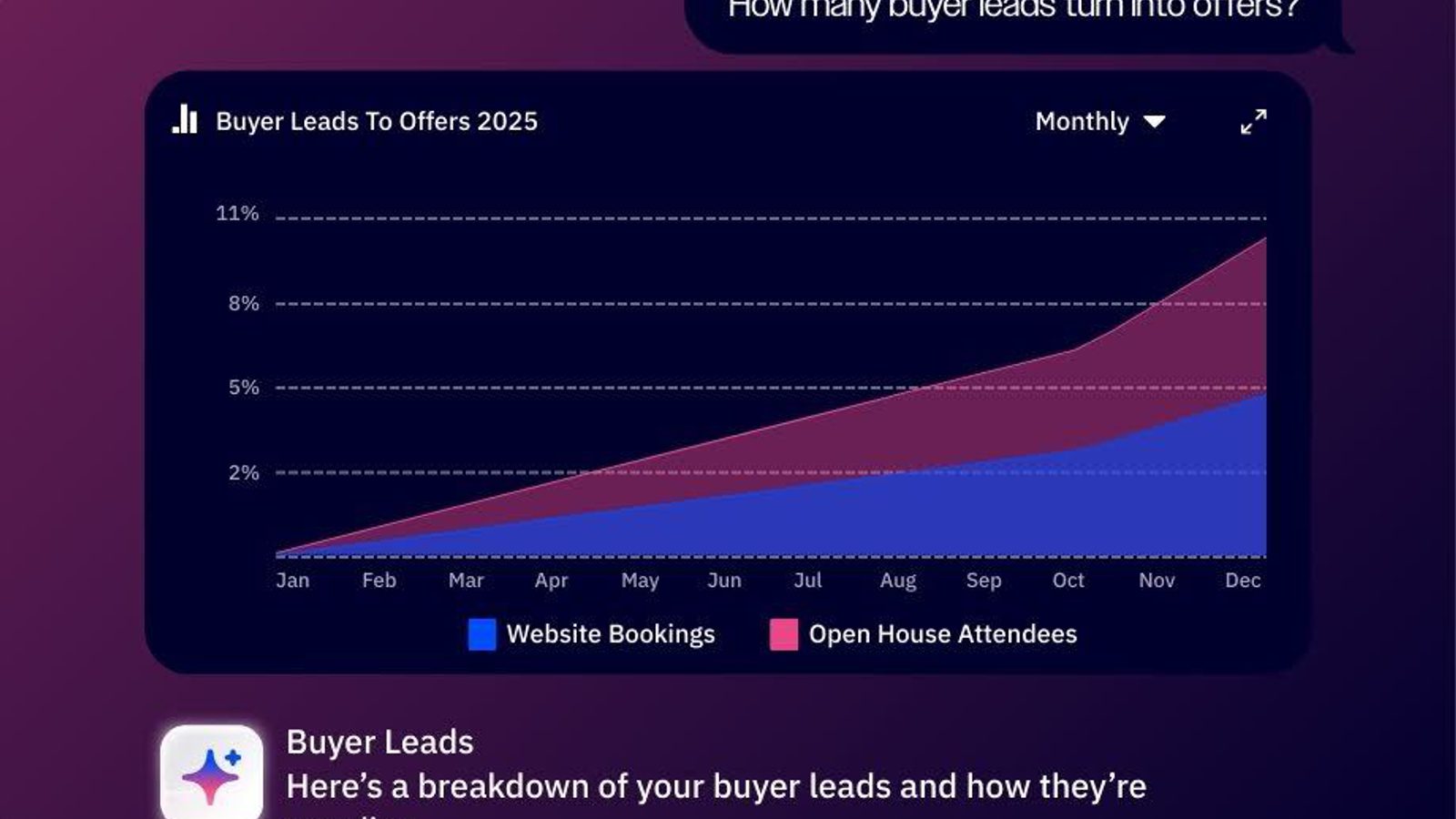SendGrid is a cloud-based email delivery service that assists businesses with transactional email management. It provides robust features, excellent scalability, and a high delivery rate. However, for some businesses, other platforms may offer more comprehensive marketing tools, greater user-friendliness, or a different pricing structure that better aligns with their needs.
Here are six alternatives to SendGrid:
- ActiveCampaign—Best for Comprehensive Marketing Automation
- Postmark—Best for Developers
- MailChimp—Best for User-Friendliness and Design Flexibility
- MailerLite—Best for Small Businesses and Budget-Friendly Pricing
- ConvertKit—Best for Content Creators and Bloggers
- AWeber—Best for Customer Support and Guidance
ActiveCampaign—Best for comprehensive marketing automation
ActiveCampaign is a comprehensive marketing automation platform offering various powerful features to help businesses streamline their marketing efforts. Its core strengths lie in its robust automation capabilities and user-friendly interface, making it an excellent alternative to SendGrid for comprehensive marketing automation.
ActiveCampaign's best feature is its advanced automation functionality. With ActiveCampaign, users can create highly personalized and targeted automation workflows that engage customers at every stage of the marketing funnel. This level of automation allows businesses to deliver timely and relevant messages, resulting in improved customer engagement and higher conversion rates.
Pros:
- Extensive automation options: ActiveCampaign provides a wide array of automation tools, including email automation, behavioral automation, and CRM integration. This allows businesses to automate repetitive tasks and deliver personalized customer experiences.
- Advanced segmentation: ActiveCampaign offers robust segmentation capabilities, allowing businesses to segment their audience based on various criteria such as demographics, behaviors, and interactions. This enables targeted messaging and more effective marketing campaigns.
- Integrated CRM: ActiveCampaign integrates seamlessly with its built-in CRM, providing a unified view of customer data and allowing businesses to manage leads, track interactions, and automate sales processes. This integration enhances marketing and sales alignment, improving efficiency and customer satisfaction.
Cons:
- Complexity of advanced features: Some beginners or less experienced users might need ActiveCampaign's 1:1 support setting up advanced automations and workflows.
| Category | ActiveCampaign | SendGrid |
| Best Feature | Advanced Automation | Scalable Email API |
| Pros | Extensive automation options Advanced segmentation Integrated CRM | Powerful email delivery infrastructure Scalability and deliverability |
| Cons | Advanced features can be more difficult to use for beginners Pricing tiers based on contacts Limited email templates | Limited automation capabilities Less robust CRM functionality Basic segmentation options |
| Entry Price | Starting at $15/month Find pricing details here | Both the Email API and Marketing plans offer a free forever plan. Email API paid plans start at $19.95/month. Marketing plans start at $15/month |
| Free Trial | Yes | Yes |
ActiveCampaign stands out as a comprehensive marketing automation alternative to SendGrid. With its advanced automation features, robust segmentation capabilities, and integrated CRM, ActiveCampaign empowers businesses to automate their marketing efforts, deliver personalized experiences, and drive better results.
While it may have more complex functionality than your average email marketing tool, ActiveCampaign's strengths in automation and CRM integration make it an excellent choice for businesses seeking a comprehensive marketing automation solution.
Postmark—Best for Developers
Postmark is an email deliverability software known for its popularity with developers and marketers alike. The software focuses on transactional emails but also supports marketing emails as well. Buy beyond sending those emails, Postmark focuses on deliverability and making sure your business's emails get into a customer's inbox and away from their spam filter.
The software's popularity among developers comes from its easy setup and API libraries available in several different coding languages, making it a versatile product for many. Postmark also includes responsive email templates, a thorough analytics dashboard, and easy customer support.
Pros:
- Email deliverability: Postmark's focus is on getting your transactional email into inboxes. While bulk email sends can take time, Postmark focuses on getting your one-to-one emails into inboxes quickly. Postmark treats every email that takes more than 10 seconds like a bug and constantly keeps users updated on their deliverability performance.
- Broad API options: The reason Postmark is so popular with developers is its extensive API library. Currently, Postmark offers libraries in .NET, Ruby, and Java, among many others. Community libraries include even more, like Go, Node.js, and Objective-C. Plus, the list is always growing.
- Ease of use: Postmark makes it easy to get set up and running quickly, sometimes within 10 minutes due to its integration abilities and library of email templates. Postmark also offers support, whether it's a phone call or a live chat.
Cons:
- Limited automation: Since Posrtmark focuses on transactional emails, it can lack some of the automation capabilities that ActiveCampaign or SendGrid offer
| Category | Postmark | SendGrid |
| Best Feature | Transactional emails | Scalable Email API |
| Pros | Extensive API library High deliverability Integrated email templates | Powerful email delivery infrastructure Scalability and deliverability |
| Cons | Limited automation options | Limited automation capabilities Less robust CRM functionality Basic segmentation options |
| Entry Price | Starts at $15/month | Both the Email API and Marketing plans offer a free forever plan. Email API paid plans start at $19.95/month. Marketing plans start at $15/month |
| Free Trial | Yes | Yes |
It's clear that Postmark is a great option for those looking for easy setup and help with deliverability. If your emails aren't hitting inboxes fast enough–or not hitting them all–Postmark can change in a matter of minutes.
Whatever language you need to integrate with, Postmark will work with your company and do so at an affordable price.
Mailchimp—Best for user-friendliness and design flexibility
Mailchimp is a leading email marketing platform known for its user-friendliness and design flexibility, making it an excellent alternative to SendGrid for businesses seeking these specific strengths. Its core strengths lie in its intuitive interface and extensive customization options, allowing users to create visually appealing and engaging email campaigns easily.
One of Mailchimp's best features is its drag-and-drop email builder. This intuitive tool allows users to design professional-looking emails without coding or design skills. The drag-and-drop functionality enables easy customization of layout, fonts, colors, and images, ensuring that emails align with the brand's visual identity.
Pros:
- User-friendly interface: Mailchimp's interface is designed with simplicity in mind, making it accessible to users of all skill levels. The platform provides a straightforward workflow, guiding users through creating and managing email campaigns.
- Design flexibility: Mailchimp offers various customizable templates, allowing businesses to create visually appealing emails that align with their brand. Users can easily customize layouts, fonts, colors, and images to match their unique style and messaging.
- Marketing automation: Mailchimp provides robust marketing automation features, allowing businesses to automate their email campaigns based on customer behavior and triggers. This automation helps deliver targeted messages and improve engagement.
Cons:
- Limited API functionality: Mailchimp's API capabilities may be more limited compared to dedicated email infrastructure platforms like SendGrid, which could impact certain integrations and custom development needs.
- Pricing tiers: Mailchimp's pricing structure is based on the number of subscribers, which means that as the subscriber list grows, the cost increases accordingly.
- Advanced features require higher plans: Some advanced features, such as multivariate testing and behavioral targeting, are only available on higher-tier plans, which may require additional investment.
| Category | Mailchimp | SendGrid |
| Best Feature | Drag-and-drop email builder | Scalable email delivery |
| Pros | User-friendly interface Design flexibility Marketing automation | Scalable email infrastructure Powerful API capabilities |
| Cons | Limited API functionality Pricing tiers based on subscribers Some advanced features require higher plans | Steeper learning curve Less design customization options Limited marketing automation capabilities |
| Entry Price | Limited free version available, Essentials plan starts at $13/month | Both the Email API and Marketing plans offer a free forever plan. Email API paid plans start at $19.95/month. Marketing plans start at $15/month |
| Free Trial | Yes | Yes |
Mailchimp offers a user-friendly and flexible alternative to SendGrid, particularly focusing on user-friendliness and design customization. With its drag-and-drop email builder, intuitive interface, and marketing automation capabilities, Mailchimp empowers businesses to create visually appealing and engaging email campaigns without requiring advanced design or coding skills.
While it may have some limitations in API functionality and pricing tiers, Mailchimp's strengths in user-friendliness and design flexibility make it a strong choice for businesses seeking an email marketing platform that prioritizes ease of use and customization.
MailerLite—Best for small businesses and budget-friendly pricing
MailerLite is an excellent alternative to SendGrid for small businesses seeking a budget-friendly email marketing solution. Its core strengths lie in its user-friendly interface and affordable pricing plans, making it accessible and attractive to businesses with limited resources.
One of MailerLite's best features is its intuitive drag-and-drop email editor. This tool allows users to easily create visually appealing and professional-looking email campaigns without coding knowledge. The drag-and-drop functionality allows for effortless customization of templates, layout, colors, and images, making it simple to create personalized and engaging emails.
Pros:
- Budget-friendly pricing: MailerLite offers competitive pricing plans, making it an affordable choice for small businesses. The plans are designed to scale with the business's needs, providing flexibility and cost-effectiveness.
- User-friendly interface: MailerLite's interface is straightforward and user-friendly, allowing users of all skill levels to navigate and utilize the platform easily. The intuitive design makes creating and managing email campaigns simple without requiring technical expertise.
- Automation capabilities: MailerLite offers automation features enabling businesses to automate email marketing efforts. From welcome emails to personalized drip campaigns, automation saves time and helps deliver targeted messages to subscribers.
Cons:
- Limited advanced features: Compared to a platform like SendGrid, MailerLite may have fewer advanced features and integrations available. This could limit the scalability and customization options for businesses with complex email marketing needs.
- Limited customer support options: MailerLite primarily offers customer support through email and chat, which might not be as comprehensive or immediate as phone support for businesses that require extensive assistance.
- Limited API functionality: While MailerLite provides API access, its capabilities might not be as extensive as those offered by SendGrid, potentially limiting integrations with other applications and custom development options.
| Category | MailerLite | SendGrid |
| Best Feature | Drag-and-drop email editor | Scalable email delivery |
| Pros | Budget-friendly pricing User-friendly interface Automation capabilities | Scalable email infrastructure Powerful API capabilities |
| Cons | Limited advanced features Limited customer support options Limited API functionality | Steeper learning curve Less user-friendly interface Limited automation capabilities |
| Entry Price | Free forever plan for up to 1,000 subscribers. $18/month billed annually for advanced features | Both the Email API and Marketing plans offer a free forever plan. Email API paid plans start at $19.95/month. Marketing plans start at $15/month |
| Free Trial | Yes | Yes |
MailerLite is a solid alternative to SendGrid for small businesses seeking a budget-friendly email marketing solution. With its user-friendly interface, drag-and-drop email editor, and automation capabilities, MailerLite empowers businesses to create engaging email campaigns without requiring extensive technical knowledge. While it may have limitations in terms of advanced features and API functionality, MailerLite's strengths in affordability and user-friendliness make it an attractive option for small businesses looking to maximize their email marketing efforts without breaking the bank.
ConvertKit—Best for content creators and bloggers
ConvertKit is an excellent alternative to SendGrid for content creators and bloggers looking to manage their email marketing campaigns effectively. Its core strengths lie in its focus on simplicity, automation, and catering specifically to the needs of creators.
ConvertKit's intuitive visual automation builder allows content creators and bloggers to create complex email sequences easily. With a simple drag-and-drop interface, users can design custom workflows that automatically deliver personalized content to subscribers based on specific triggers, such as sign-ups, clicks, and purchases. This automation feature saves time and ensures the right content reaches the right audience at the right time.
Pros:
- Simplicity and ease of use: ConvertKit is designed with simplicity in mind, making it user-friendly even for those with limited technical skills. The intuitive interface and straightforward tools enable content creators and bloggers to manage their email campaigns efficiently without extensive training.
- Audience segmentation and personalization: ConvertKit offers robust audience segmentation capabilities, allowing users to target specific groups of subscribers based on their interests, behaviors, or other criteria. This level of personalization helps content creators deliver tailored content that resonates with their audience, resulting in higher engagement and conversion rates.
- Content-focused features: ConvertKit understands the needs of content creators and bloggers, offering features like built-in landing pages and opt-in forms that integrate seamlessly with their websites. This integrated approach simplifies capturing leads and growing an email list.
Cons:
- Limited advanced marketing features: Compared to SendGrid, ConvertKit may have fewer advanced marketing features and integrations available. This could be a limitation for businesses that require more complex automation or advanced analytics.
- Price scalability: While ConvertKit offers affordable plans for smaller email lists, the pricing can increase significantly as the subscriber count grows. This may make it less cost-effective for businesses with large email lists.
- Reporting and analytics limitations: ConvertKit provides basic reporting and analytics tools, but they may not be as comprehensive as those offered by SendGrid. This could limit the ability to track and analyze the performance of email campaigns in detail.
| Category | ConvertKit | SendGrid |
| Best Feature | Visual automation builder | Scalable email delivery |
| Pros | Simplicity and ease of use Audience segmentation and personalization Content-focused features | Scalable email infrastructure Powerful API capabilities |
| Cons | Limited advanced marketing features Price scalability Reporting and analytics limitations | Steeper learning curve Less user-friendly interface Limited automation capabilities |
| Entry Price | Free forever plan, paid plans starting at $9/month billed annually for advanced features | Both the Email API and Marketing plans offer a free forever plan. Email API paid plans start at $19.95/month. Marketing plans start at $15/month |
| Free Trial | Yes | Yes |
ConvertKit is an excellent alternative to SendGrid for content creators and bloggers who want simplicity, automation, and tools tailored to their needs. With its visual automation builder, audience segmentation capabilities, and content-focused features, ConvertKit enables users to create effective and personalized email campaigns without extensive technical knowledge. Although it may have limitations in terms of advanced marketing features and scalability in pricing, ConvertKit's core strengths make it a preferred choice for content creators and bloggers looking to engage and nurture their audience effectively.
AWeber—Best for customer support and guidance
AWeber is a reliable alternative to SendGrid, particularly for those seeking exceptional customer support and guidance in their email marketing efforts. AWeber's core strengths lie in its commitment to providing top-notch support to its users, ensuring they have the necessary guidance and assistance to make the most of the platform.
One of AWeber's standout features is its dedicated customer support team. AWeber offers live chat, phone, and email support, ensuring that users can easily reach out for help whenever they encounter any issues or have questions about the platform. The knowledgeable support staff is responsive and ready to provide guidance, troubleshoot problems, and offer advice on best practices to maximize the effectiveness of email marketing campaigns.
Pros:
- Excellent customer support: AWeber's commitment to exceptional customer support sets it apart. Users can rely on prompt assistance from a knowledgeable, readily available team to address any concerns and provide guidance.
- Extensive knowledge base and resources: AWeber offers a comprehensive knowledge base, tutorials, and educational resources to help users navigate the platform and learn effective email marketing strategies. This wealth of information is valuable for both beginners and experienced marketers.
- User-friendly interface: AWeber's interface is intuitive and user-friendly, making it easy for users to set up and manage their email campaigns. The platform offers drag-and-drop email builders, customizable templates, and seamless integration with other tools, simplifying the email marketing process.
Cons:
- Limited advanced automation features: AWeber may have fewer advanced automation features compared to SendGrid. This could be a limitation for businesses that require complex automation workflows and sophisticated segmentation.
- Pricing based on subscriber count: AWeber's pricing is based on the number of subscribers, and as the subscriber count increases, the cost of the service also rises. This could make it less cost-effective for businesses with large email lists.
- Limited third-party integrations: While AWeber offers integration with popular tools and platforms, its range of third-party integrations may be more limited compared to SendGrid. This could affect the seamless integration of AWeber with other marketing tools in a business's tech stack.
| Category | AWeber | SendGrid |
| Best Feature | Dedicated customer support | Scalable email delivery |
| Pros | Excellent customer support Extensive knowledge base and resources User-friendly interface | Scalable email infrastructure Powerful API capabilities |
| Cons | Limited advanced automation features Pricing based on subscriber count Limited third-party integrations | Steeper learning curve Less user-friendly interface Limited automation capabilities |
| Entry Price | Free forever plan for up to 500 subscribers, paid plans starting at $12.50/month, billed annually for advanced features | Both the Email API and Marketing plans offer a free forever plan. Email API paid plans start at $19.95/month. Marketing plans start at $15/month |
| Free Trial | Yes | Yes |
AWeber is a reliable alternative to SendGrid, especially for businesses seeking exceptional customer support and guidance. With its dedicated customer support team, extensive knowledge base, and user-friendly interface, AWeber ensures that users receive the assistance and resources they need to succeed in their email marketing efforts. While AWeber may have limitations regarding advanced automation features, pricing based on subscriber count, and the range of third-party integrations, its core strengths make it an excellent choice for businesses prioritizing customer support and guidance in their email marketing journey.







